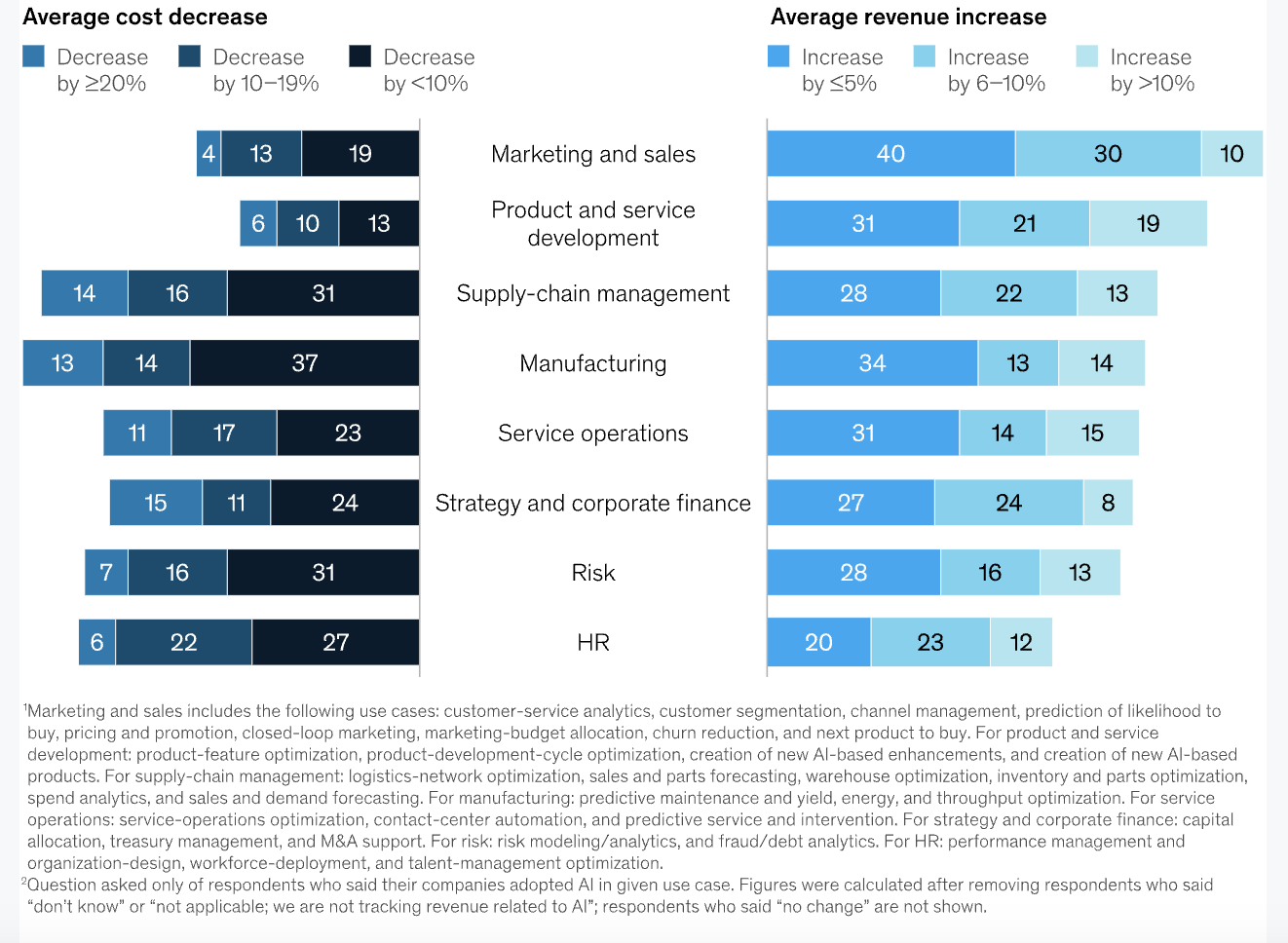How AI can transform both your sales strategies and customer service operations?
Are you looking for ways to boost sales conversion rates, improve customer satisfaction, and streamline your business processes using AI?
Perfect, let’s uncover how AI can revolutionize your approach to sales and customer service! From AI-driven insights that enhance sales strategies to the importance of defining success metrics in customer service, we’re set to explore how this powerful technology can be adapted to meet specific business needs and challenges, offering innovative solutions and measurable results.
Boost Your Sales Conversion Rates with AI
In the modern business world, staying competitive means embracing the latest technologies. Artificial Intelligence is transforming the way we approach sales, offering tools and insights that can significantly enhance your strategy. Here’s how AI-driven insights can dramatically boost your sales conversion rates and why adopting this technology is essential for your business growth.
Know Your Customers Inside Out
Understanding your customers is fundamental to driving sales. AI dives deep into customer data, revealing patterns and preferences that might not be immediately apparent. According to a report by Sprout Social, companies using AI insights for personalization see sales gains of 6-10%, which is two to three times greater than those not using AI (Sprout Social). By analyzing customer behavior and purchase history, AI helps you create targeted marketing campaigns that resonate with your audience.
Predict Who Will Buy

Gone are the days of guessing which leads will convert. AI enhances predictive analytics, offering precise insights into customer behavior. Forbes highlights that predictive analytics can boost sales opportunities significantly. AI can analyze vast amounts of data to predict which leads are most likely to convert, allowing your sales team to focus their efforts where it matters most.
Personalize or Perish
In a world where generic pitches are becoming increasingly ineffective, personalization is key. AI-driven personalization significantly improves engagement, with McKinsey reporting that personalized emails achieve a 41% higher click-through rate (Epsilon). Tailoring your interactions based on AI insights ensures that your messages are relevant and compelling, increasing the likelihood of conversion.
Automate and Dominate
Automation is another area where AI shines. By taking over tedious and repetitive tasks, AI allows your sales team to focus on what they do best: closing deals.
- Stat: Gartner predicts that by 2028, 60% of B2B sales work will utilize conversational AI (Gartner).
- Benefit: From automating follow-up emails to managing customer relationships, AI-driven automation streamlines your sales processes, making your team more efficient and effective.
Make Smarter Decisions
AI enhances decision-making with clear, actionable insights. According to McKinsey, 63% of business leaders report revenue increases from AI adoption, especially in marketing, sales, product development, and supply-chain management. High-performing companies are nearly three times more likely to see revenue gains over 10%. AI’s real-time data and predictive analytics optimize sales strategies and improve conversion rates.
Conclusion
AI is no longer a luxury; it’s a necessity for modern businesses looking to stay competitive. By leveraging AI to understand, predict, personalize, automate, and make smarter decisions, you can significantly boost your sales conversion rates. Don’t miss out on the opportunity to transform your sales strategy with AI-driven insights.
Why Defining Success Metrics is Essential for AI Projects
As AI continues to revolutionize customer service, understanding its impact and maximizing its potential requires clear and well-defined success metrics. Proper metrics are essential for assessing the true value and impact of AI initiatives, avoiding false conclusions, and ensuring resource allocation aligns with strategic business goals. Here’s how establishing success metrics can significantly enhance your AI-driven customer service strategy.
Aligning AI Efforts with Strategic Business Goals
To fully leverage AI in customer service, it’s crucial to align AI initiatives with your broader business objectives. This alignment involves setting realistic expectations and benchmarks for key performance indicators (KPIs) such as:
- Customer Satisfaction Scores: Improved customer interactions lead to higher satisfaction.
- Response Times: Faster resolutions enhance the customer experience.
- Resolution Rates: Efficient problem-solving improves overall service quality.
Setting Realistic Expectations and Benchmarks

Establishing clear benchmarks helps in setting achievable targets and measuring progress accurately. Without these, it’s easy to misinterpret results, potentially leading to wasted resources and missed opportunities. Metrics such as first contact resolution rates and customer feedback scores are essential for tracking the effectiveness of AI in improving customer service.
- First Contact Resolution: Track the percentage of inquiries resolved on the first attempt.
- Customer Feedback: Regularly gather and analyze customer feedback to measure satisfaction.
Enabling Data-Driven Decision-Making and Course Corrections
Data-driven decision-making is at the heart of successful AI implementation. By continuously monitoring metrics, organizations can make informed decisions and adjust strategies as needed. This approach ensures that AI initiatives remain aligned with business objectives and adapt to changing conditions.
- Course Corrections: Use real-time data to make necessary adjustments.
- Improved Outcomes: Data insights help refine AI models and enhance service quality.
Measuring ROI and Justifying Resource Allocation
One of the most critical aspects of AI projects is demonstrating their return on investment (ROI). Well-defined metrics allow companies to measure the tangible benefits of AI, such as increased efficiency, reduced costs, and improved customer loyalty. This measurement is vital for justifying resource allocation and securing stakeholder support.
- Cost Savings: Calculate savings from automating routine tasks.
- Revenue Impact: Measure the increase in sales or customer retention due to improved service.
Fostering Accountability and Continuous Improvement
Clear success metrics foster a culture of accountability and continuous improvement. By setting specific targets for KPIs, businesses can motivate their support teams to deliver exceptional service consistently. This approach also enables organizations to identify areas for improvement and implement targeted training programs.
- Performance Targets: Set and monitor specific goals for support agents.
- Continuous Feedback: Regularly review performance data to drive improvements.
Overcoming Common Challenges in AI Customer Service
Implementing AI in customer service comes with its own set of challenges, such as the complexity and uncertainty of AI technologies and difficulties in quantifying intangible benefits. Addressing these challenges requires a proactive approach to metric definition and a willingness to adapt as AI technologies evolve.
- Complexity: AI operates in dynamic environments, making performance forecasting difficult.
- Intangible Benefits: Benefits like customer satisfaction can be hard to quantify but are crucial for success.
Conclusion
Establishing well-defined success metrics is essential for maximizing AI’s potential in customer service. By aligning AI initiatives with business objectives, setting realistic benchmarks, and fostering a culture of continuous improvement, organizations can unlock the full potential of this transformative technology. With clear metrics, businesses can ensure their AI investments deliver tangible value and drive significant enhancements in customer experience.
Read more here: https://arekskuza.com/the-inno…

